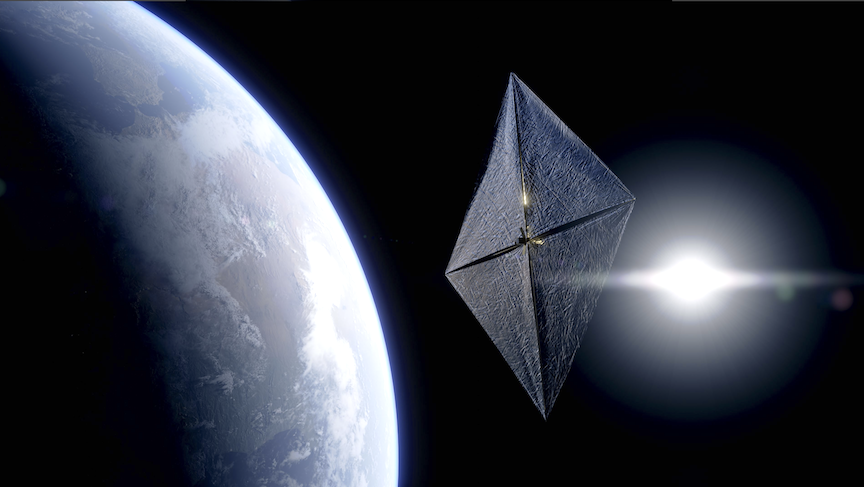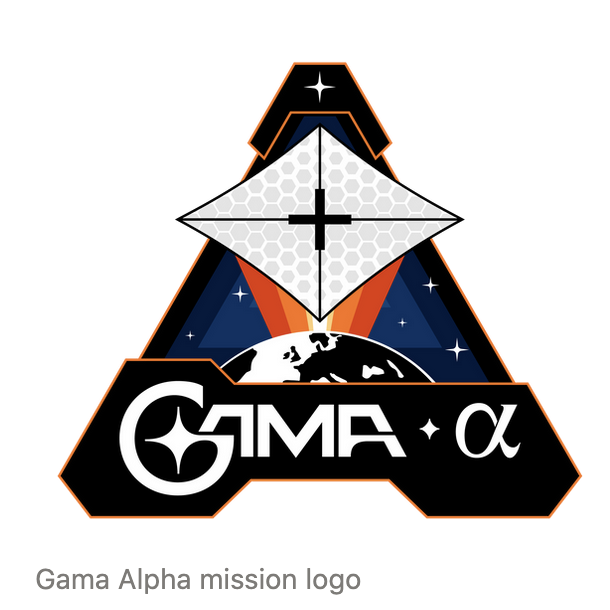
Gama, a French aerospace company’s first solar sail was launched to space, with the support of the CNES and private companies including CMA CGM, a global player in sea, land, air, and logistics solutions
After two years of research and rapid development, the satellite containing the solar sail was successfully placed in orbit by a SpaceX Falcon 9, on the 3rd of January 2023. A solar sail uses only sunlight for propulsion, removing the need to carry fuel and opening new scientific and commercial possibilities in our solar system and beyond. The Gama Alpha mission aims to test the deployment and control of the sail, a decisive step for the democratization of this new means of space propulsion.

Solar sails rely on photonic propulsion, using the pressure produced by photons when they bounce off a reflective surface. The force is weak, but when applied to a large surface and in the void of space, allows the spacecraft to continuously accelerate.
With continuous acceleration, a solar sail could theoretically become the fastest spacecraft made by humans. Similar to maritime sailing, it is the position of the sail in relation to the Sun’s rays that will determine the trajectory of the craft. And as with a conventional sail, it is therefore possible to move away from the Sun but also to get closer by sailing “upwind”.
“In space, the sun’s radiative pressure allows constant acceleration. The result? Missions that are 10 to 20 times less expensive and no longer limited by a fuel budget. A solar sail is poetic, inherently sustainable, and dramatically lowers the cost of access to deep space or unstable orbits,” says Andrew Nutter, Gama co-founder.

Launch of the Gama Alpha MissionGama’s first demonstrator mission, “Gama Alpha”, is a satellite placed in orbit at an altitude of 550 km by a SpaceX Falcon 9 rocket on January 3rd of 2023. The 6U cubesat (the size of a large shoebox) weighs just 12 kilograms, including the packed 73.3m2 sail.
The first phase will be commissioning the satellite, establishing communications and checking all the vital signs are good. The second phase will be the sail deployment. The satellite will be put in slow rotation, initiating the release of four tungsten masses at the tip of each sail petal. The centrifugal force generated by the rotation is enough to ensure the deployment and the structural shape of the sail. Comments Jordan Culeux, Gama Lead System Engineer.
The primary objective of Gama Alpha is to deploy and control the sail, demonstrating that a very large sail can be controlled from a cubesat and receiving flight data to improve simulations and control algorithms. Demonstrating sustained navigation will be the objective of Gama’s second mission, Gama Beta.
The final phase for Alpha will be deorbiting the satellite, benefiting from the Earth’s remnant atmosphere at mission altitude. The large surface area and small mass will cause the satellite to rapidly deorbit, minimizing the risk of debris and also demonstrating a sail can be used to deorbit satellites at end of life.

The development of the satellite took two years, with many prototypes and iterations of the folding and deployment system of the sail, as well as development of simulations and software to control the spacecraft. Part of the platform (electrical systems, telecommunications, on-board cards, etc.) was supplied by the Lithuanian company NanoAvionics.
“The technology developed by Gama is unique in that the company works on the deployment and control of ever larger surfaces in space. Our ability to deploy a sail the size of a tennis court from a satellite barely larger than a shoebox opens up new perspectives,” says Thibaud Elziere, Gama co-founder.
The Gama Alpha mission will be followed Gama Beta, to demonstrate sail propulsion and navigation. While Alpha is about the sail deployment, Beta will be launched at twice the altitude and focus on “navigation”, going from A to B using only photonic propulsion and proving all key elements of the technology.
